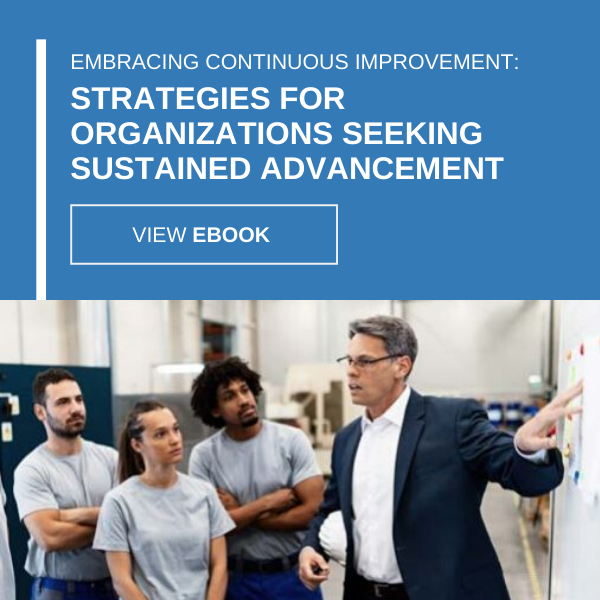
How to Preserve Institutional Knowledge for Future Operational Success
Institutional knowledge. It’s a hot topic these days, especially with increasing numbers of baby boomers entering retirement age. Added to that, some people are taking early retirement as a result of pandemic-caused layoffs. It means you may be losing people who have acquired hard-won knowledge from years on the job.
The textbook definition of “institutional knowledge” is a little hard to get your mind around. It’s generally defined as “what an organization knows.” We’d like to expand on that a bit. The people who work in your company day to day carry your institutional knowledge, learned by years and even decades on the job.
It’s the experiences, processes, deep understanding and “this comes naturally” abilities of your people to get the job done in an intuitive way. The hard-won, trial-and-error-gleaned instincts that your senior people have absorbed from years on your front lines. That’s your company’s institutional knowledge. But what happens when those people leave? It’s common to have retirees walk out the door and take all that they’ve learned on the job with them. Younger people who are in line to replace them simply don’t have the years on the job to pick up where their elder colleagues left off.
But, in this age of digital transformation, there’s another facet when it comes to the loss of institutional knowledge. That very knowledge is changing faster than people can keep up. It’s about advancements in technology. So, when employees leave a company to take a new job, they might just be the people who have mastered a new technology you’re using, whether it’s on the shop floor or in the office.
That’s why a knowledge-retention strategy is an important tool in ensuring the continuity of your workforce’s skills. It’s about engaging your younger workers, encouraging them to upskill and immerse in training, and ensuring you have a succession plan in place before your valuable long-term workers are getting their gold watches at retirement parties.
Here are a few suggestions for doing just that.
Mentorship
Many manufacturing and mining companies already have solid mentorship programs in place. If you don’t, it may be time to consider it. It’s simply the pairing of younger workers with older, more experienced pros who can give these young people solid, on-the-job training in how the job gets done. Ideally, you should put those types of mentorships in place years before your older workers retire. It can be a touchy subject to broach, however. Done incorrectly, it can backfire into your veterans thinking you’re anxious to show them the door. That can erode morale very quickly and create resentment between mentor and mentee. Be careful to frame the conversation about mentorship in the context of how valuable your older workers are and how much the company wants and needs to retain their knowledge when — somewhere down the line — they decide it’s time to retire.
Emphasize the “why,” not just the “how”
It’s all too easy to train a younger worker in how to use a wrench on the production line. Do this, then do that. But it’s important for younger workers, especially millennials, to understand the why, not just the how. They may be one cog on a production line, but they need to know how their efforts contribute to the end result. When people see the big picture and how they fit into it, it creates a sense of satisfaction in performing their daily tasks and a greater sense of engagement.
Capture knowledge through structured interviews
Sometimes, people don’t know how to tell you what they know. How do you explain an instinct or a feeling that has been learned over time through trial and error? Much like families sit down with their elders and videotape conversations about their life, companies are doing the same with retiring workers. The conversations revolve around lessons learned on the job. Hard-won experience. Mistakes that taught them the right way to do things. These sorts of recordings are like gold to any company who loses a seasoned pro to retirement.
Encourage younger workers to upskill with an eye toward the future
Training for the job they’re in now is, of course, essential. But upskilling with an eye toward the future ensures continuity and helps create a pipeline when it comes to promoting from within. Maybe that means employees on the shop floor taking online courses to upskill for a job in management or someplace else on your company’s corporate ladder. Or you can designate a group to become the go-to experts in new technology or processes you’re bringing into the mix.
Competitive advantages for on the job preservation
Bottom line, it’s a matter of preserving your employees’ lessons learned and expanding your current employees’ knowledge of the job.
Two competitive advantages for preserving institutional knowledge on the job boil down to contracts and processes. Contracting excellency is core to supply chain expertise including contracts with vendors, customers, and lateral partners. Contract competency resides in supply chain practices and relationships between key accounts and company managers, however contracting knowledge retention resides in SRM, CRM, and ERP systems.
Processes competency is developed using tools such as Lean and Six Sigma and can be handed down through mentorship and training, but processing knowledge retention resides in Procedures Manuals, Management of Change procedures and documentation, and Management Operating Systems.
At USC Consulting Group, we help affect positive change on a company’s systems and people to help find more efficiency out of their current assets and improve overall production. Contact us today for more information.






